Chapter 13 – Summer in the Diggings
Fredi and his two partners debarked at Yuba City after more than a week of poking along in the slow steamboat. The unsettling interval of the hanging at Sacramento had nearly faded from their minds in the excitement of approaching the fabled diggings – after so long and arduous a journey. Edwin, having soon recovered his spirits after witnessing the hanging, continued to enliven the journey with discourses on searching for gold, and on the most expeditious means of extracting it from wherever it might be – among river gravel, or in the crevices of granite rocks.
“Likely there are many who would say that the North Fork is pretty well mined out, but Pa … Mr. Padgett thought it worth the trouble to winter over, to keep the claim, or to work a new one upstream, rather than just follow the rush to a new strike. He was pretty certain of it – and so am I,” Edwin said, when O’Malley questioned him closely about his intention of returning to the stretch of river at Pine Tree Diggings. “And there was always enough and then some,” he added, with touching earnestness. “At every likely bend. But we may have to pack in by mule beyond Downieville, if the road is no better … and it gets rougher, the farther we go.”
The mountains loomed ahead of them now – piling up in distant blue and lavender slopes, the very topmost still lightly touched the last winter snows. The scent of pine-woods breathed on every errant wind – and to Fredi, every streamlet promised to be paved in gold.
“What will we do with the wagon, then?” He asked – as it turned out, Edwin was right about having to pack in all their supplies and gear, but O’Malley found an Irish storekeeper in Downieville, whom he had never met before, but claimed to have come from Balleymena and fell on O’Malley voluble joy, the Irish coming out so thick in his speech that neither Fredi or Edwin could understand him.
“Likely that Con Reilly and I are cousins, several times removed through our mothers, for his sainted mother and mine were both Kellys from Castledown,” O’Malley said, cheerful as a cricket. “And he has struck a bargain with me on the strength of that relation – for the use of our wagon and mules during the summer, he will see that all our trash an’ traps are packed entire to the Pine Tree Diggings, through the good offices of his friend in the mule-freighting concern … who is likely another cousin.”
“Can you trust this man Reilly?” Fredi asked, warily, and O’Malley chuckled.
“Of course, Fredi-boyo – Con’s my cousin from Ballymena, and a good Catholic, as well.”
Fredi sighed in deep exasperation and looked across at Edwin. “This is the man who unthinkingly accepts invitations to games of change with strangers in saloons – is it no wonder he needs a keeper?”
Edwin grinned back, in delight – almost the first time that Fredi had observed a wholly unguarded expression on the boy’s face. “We’ll do, between us,” Edwin replied, wholly confident. “And we are almost there.” His face lost a certain degree of confidence, as O’Malley went to commiserate with his countrymen and arrange the disposition of the wagon and their own mules. Fredi briefly wondered why; and not for the first time. Edwin sometimes seemed as mysterious and unforthcoming as O’Malley did, when it came to background and personal experience. Was he himself the only honest and forthright person of the three in this partnership? Perhaps, Fredi concluded – but then, he was also the only one of them well-armed and a fair shot, with the sturdy Colt dragoon revolver that he bought in San Francisco when Mr. King had alluded to the fact that distributing the Bulletin newspaper might have some hazards attached. The Colt made a considerable weight in the holster at his side – but not as much as the one looted from him by the bandits on the road from San Bernardino.
They set out from the ramble of a town that was Downieville – a town longer than wide, a ramble of stone-built, log and sawn lumber structures, all crammed into a narrow valley where two streams met, and overlooked by heights from which the trees had been removed, as if by some vast straight-razor. Some of the buildings were very new and fine, for apparently Downieville was of some years’ existence, as towns in the gold country went, and possessed the additional honor of being the county seat. But the territory beyond was increasingly mountainous, and Edwin was right – they could not have taken the wagon all the way to that stretch of the Yuba known as the Pine Tree Diggings. It was not, so O’Malley and Fredi were given to understand, a proper settlement, although if it proved rich enough, there was always that possibility. There was also the possibility of the road being improved, but until that day – a pack-train of mules would make do. There were other hopeful Argonauts on the track towards the higher mountains; men in rough clothes; the poorest of them bearing only a heavy pack on their own bent backs. With a train of eight of Reilly’s mules, every one so fully laden that more of their burden was visible than the mule itself, Fredi, O’Malley and Edwin counted as the most fortunate.
“We should be able to remain all summer, with what we have brought,” Edwin promised. “And into fall – until the first snows fall.”
“And by then, we will all be rich men,” O’Malley promised expansively. Fredi thought again of how he would return to Texas, and pay Carl back the money for the cattle. This was a very agreeable contemplation, and he relished his imagining for the remainder of that day. They camped that night in a small sheltered draw, picketing the mules by the waterside, lulled to sleep by a combination of weariness, the sound of running water, and the gentle tinkling of mule bells. Only Edwin seemed subdued, as if he moved under a private cloud of misery.
Towards the end of the second day, the mountains shouldered in on either side of the river. On the farther side of the ravine, the river described a gentle bend through a level meadow, which surrounded a small eminence which to Fredi somewhat looked like a kneeling woman with her skirts spread around her. A single tall pine tree, half-dead and gone silvery with weathering but still as straight as a ship’s mast crowned the hill. Here the river spread into shallows, and the last of the afternoon sun sparkled upon the running water. A rough oblong of logs notched at the corners – the lower walls of a rough miner’s cabin marked last year’s diggings at Pine Tree. This ramshackle place had been roofed in some previous summer with canvas, which now hung from the rafters in tattered shreds.
“This is the place,” Edwin said, and Fredi noticed that Edwin looked very deliberately away from the ruined structure. “I b’lieve we have arrived in good time, so that we may stake our claim first of all and in the most promising part. This stretch was worked over pretty well last summer, so I doubt if there is much to be found, unless by digging into the hill. We should move a little farther and set up our camp just where the river bends north-east. Tomorrow, I’ll see where color comes up strongest – and that’s where we’ll set the cradle.”
In the night – so dark a night that Fredi could barely see his hand before his face, he was wakened by Edwin; the boy cried out once, so loud that Fredi woke out of profound sleep. They had stretched their plain canvas shelter in a level place between a fallen tree, and a steep bank – it would not do for much longer than a night or two – for they were in haste for some kind of shelter.
“Wake up,” Fredi reached across and shook Edwin’s shoulder. “You’re having a bad dream – d’you want to frighten the mules?” He spoke in German, first – forgetting where he was, and thinking he was a child again, and it was Johann with the bad dream. The younger boy woke with a gasp, and a choked cry of, “Don’t touch me!” and struck out blindly at Fredi with the full force of his fist. That fist landed full on Fredi’s face – it hurt, and Fredi yelled as pain shot though his skull like a lightning-bolt.
“Stop that, you dummy!” Fredi shouted, and launched from his own blankets onto the younger boy, pinning Edwin by the shoulders in his own bedroll with his own weight. Edwin fought him with frantic energy, hampered by the heavy quilts, and it turned into a blind tussle in the pitch-dark, Fredi shouting and Edwin sobbing, until O’Malley struck a patent Lucifer against his boot-sole and lit the single candle in an iron miner’s candlestick driven into the earth bank.
“What’s all this, then?” O’Malley demanded, while Nipper peeked out from under O’Malley’s great-coat, piled at the foot of his bedroll, the dog’s eyes gleaming in the dim candle-light.
“He was having a nightmare,” Fredi replied, regardless of the blood streaming from his nose and Edwin thrashing about, even with Fredi’s full weight braced against the younger boy’s shoulders. “And when I tried waking him, he hit me!”
“Fredi-boyo, it’s the nightmare speaking – let him go,” O’Malley urged him again, and Fredi sat back on his heels with a grunt.
“I didn’t mean to,” Edwin sobbed. “I’m sorry, Freddy … I – I dreamed that someone was trying to kill me.”
“Ach, they say that if you want to wake a sleeper in the midst of a bad dream, you should shake their foot,” O’Malley crooned. “Fredi-boyo – here’s my handkerchief … Edwin, ‘tis lucky you are, then, for our Fredi-boy has a temper when he is roused. Say again that you are sorry – for wakening us all and frightening the poor little doggie. Go to sleep again, and dream of a river of gold – a lovely river, with water as clear as diamonds – and trees by that river, with trunks of ivory – yes, ivory branches, too, and leaves of emeralds …” Fredi, still simmering over the pain of his bleeding nose, took the handkerchief and crawled back into his disarrayed blankets, while Edwin sniffled in misery and O’Malley blew out the candle. But O’Malley kept talking in the dark, weaving with his voice a spell of wonders and marvels, and Fredi drifted away into sleep, only a little rattled in knowing that he and O’Malley were about to spend a summer in the diggings, in the company of a boy who had nightmares about someone trying to kill him. “He hits me again,” Fredi’s last coherent thought before he dropped into billowy grey clouds of sleep, “And I might be tempted to kill him for real. But Nipper likes him, so I suppose that I won’t.”
The next morning proved to be the pattern for many another morning, through that long summer; Edwin went to the river-edge with the broad-brimmed pan, and scooped up a pan of river-gravel, sand and water. Crouching on his heels in the shallow water, he began agitating the pan so that the water and gravel swirled in a circle. He tilted the pan at the water’s surface, as the water continued swirling, allowing water to sweep away a little of the gravel and sand. O’Malley and Fredi watched, breathless with anticipation.
“Gold is heavy,” Edwin said, as earnest as a professor giving a lecture. “It will always settle to the bottom of the pan – don’t ever slop the sand and gravel out – just let the water sweep it off, layer by layer. By the time you have a spoonful of sand left, you ought to see the gold – that is, if there is any color in this stretch. And I am bound and certain there is.”
“How much can we claim of this riverbank?” Fredi asked anxiously.
“Only as much as we can work, the three of us,” Edwin answered. “I think there was someone working this claim around mid-summer, but they abandoned it after a while, upon hearing stories of richer strikes. If you stop working a claim … then it’s up for grabs. So … one of us must always be here on the claim.”
“Aye, that’s enough of a reason to take partners,” O’Malley nodded sagely. “So – if this is promising enough, we set up camp and assemble the cradle?”
“That’s the plan,” Edwin dipped the pan under the water and let the slight motion scoop away all but a trifling smear of sand. “You see – there it is! Gold – and enough to be worth setting up right on this place. I thought I might have to pan up and down this stretch for hours.”
“You have the fortunate eye, boyo,” O’Malley remarked, “And we’ll be rich men, in the twinkling of an eye, that’s for certain!” He and Fredi looked over the boy’s shoulder, hardly daring to believe; but yes, gleaming in the dark sand in the water at the bottom of the pan were half a dozen bright globules, as bright and sunny as the edge of the sun, peeping just now over the shoulder of the hill to the east, and outlining the eldritch shape of the tall, half-dead pine tree upon it.
Edwin grinned at them in triumph and relief. “Perhaps not rich, but at least fortunate,” he allowed – and they went to mark their claim, set up a more permanent camp and assemble the rocker, in happy expectation of a fortune awaiting them, at the edge of a river running out of the mountains of California – where there was perhaps, a single great cliff of gold, crumbling into grains and pebbles of pure gold and scattering into the streams and rivers of California.


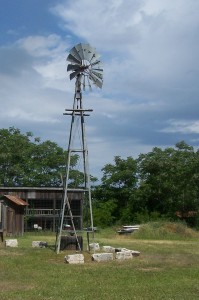
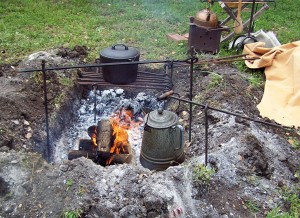
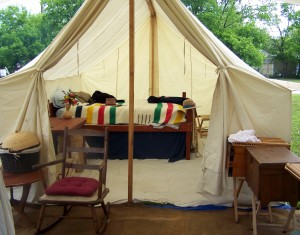
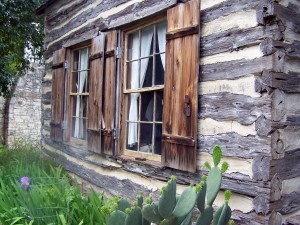
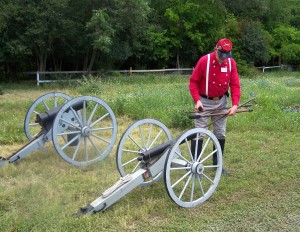
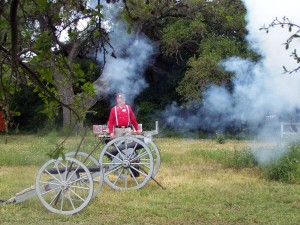
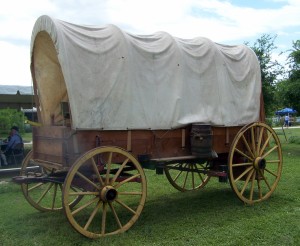
Recent Comments